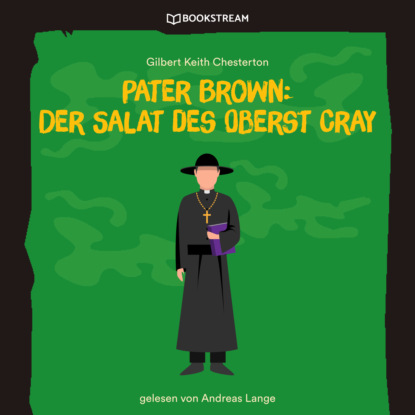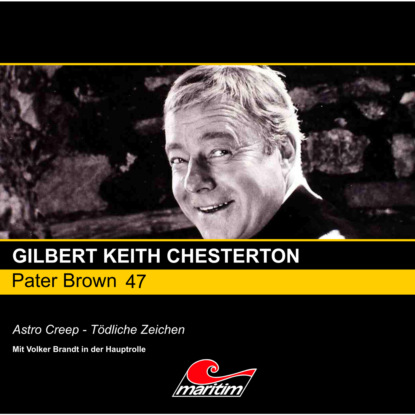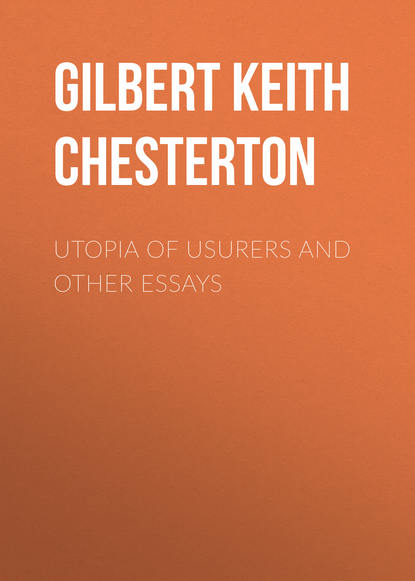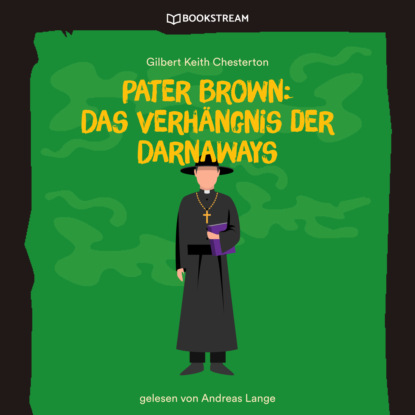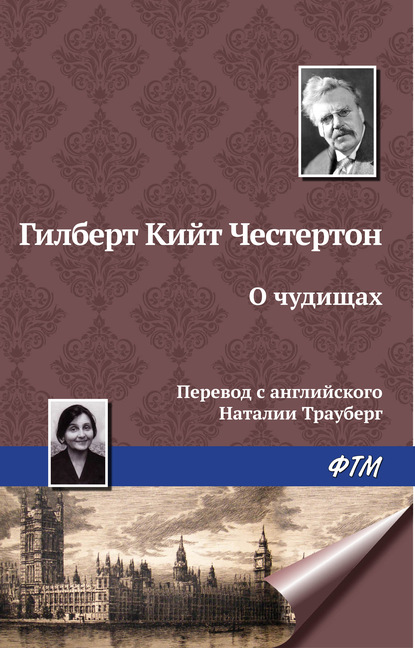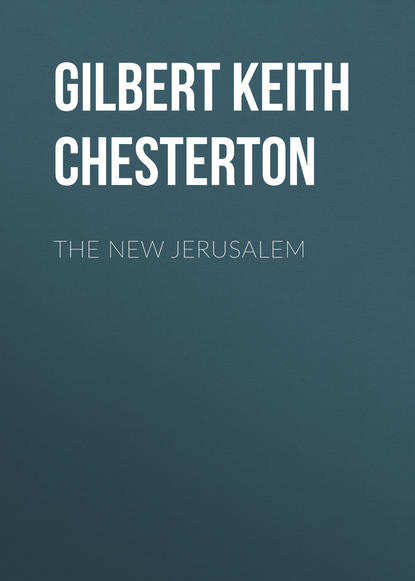 Полная версия
Полная версияПолная версия:
Гилберт Кит Честертон The New Jerusalem
- + Увеличить шрифт
- - Уменьшить шрифт

G. K. Chesterton
The New Jerusalem
PREFACE
This book is only an uncomfortably large note-book; and it has the disadvantages, whether or no it has the advantages, of notes that were taken on the spot. Owing to the unexpected distraction of other duties, the notes were published in a newspaper as they were made on the spot; and are now reproduced in a book as they were published in the newspaper. The only exception refers to the last chapter on Zionism; and even there the book only reverts to the original note-book. A difference of opinion, which divided the writer of the book from the politics of the newspaper, prevented the complete publication of that chapter in that place. I recognise that any expurgated form of it would have falsified the proportions of my attempt to do justice in a very difficult problem; but on re-reading even my own attempt in extenso, I am far from satisfied that the proper proportions are kept. I wrote these first impressions in Palestine, where everybody recognises the Jew as something quite distinct from the Englishman or the European; and where his unpopularity even moved me in the direction of his defence. But I admit it was something of a shock to return to a conventional atmosphere, in which that unpopularity is still actually denied or described as mere persecution. It was more of a shock to realise that this most obscurantist of all types of obscurantism is still sometimes regarded as a sort of liberalism. To talk of the Jews always as the oppressed and never as the oppressors is simply absurd; it is as if men pleaded for reasonable help for exiled French aristocrats or ruined Irish landlords, and forgot that the French and Irish peasants had any wrongs at all. Moreover, the Jews in the West do not seem so much concerned to ask, as I have done however tentatively here, whether a larger and less local colonial development might really transfer the bulk of Israel to a more independent basis, as simply to demand that Jews shall continue to control other nations as well as their own. It might be worth while for England to take risks to settle the Jewish problem; but not to take risks merely to unsettle the Arab problem, and leave the Jewish problem unsolved.
For the rest, there must under the circumstances be only too many mistakes; the historical conjectures, for they can be no more, are founded on authorities sufficiently recognised for me to be permitted to trust them; but I have never pretended to the knowledge necessary to check them. I am aware that there are many disputed points; as for instance the connection of Gerard, the fiery Templar, with the English town of Bideford. I am also aware that some are sensitive about the spelling of words; and the very proof-readers will sometimes revolt and turn Mahomet into Mohammed. Upon this point, however, I am unrepentant; for I never could see the point of altering a form with historic and even heroic fame in our own language, for the sake of reproducing by an arrangement of our letters something that is really written in quite different letters, and probably pronounced with quite a different accent. In speaking of the great prophet I am therefore resolved to call him Mahomet; and am prepared, on further provocation, to call him Mahound.
G. K. C.
CHAPTER I
THE WAY OF THE CITIES
It was in the season of Christmas that I came out of my little garden in that "field of the beeches" between the Chilterns and the Thames, and began to walk backwards through history to the place from which Christmas came. For it is often necessary to walk backwards, as a man on the wrong road goes back to a sign-post to find the right road. The modern man is more like a traveller who has forgotten the name of his destination, and has to go back whence he came, even to find out where he is going. That the world has lost its way few will now deny; and it did seem to me that I found at last a sort of sign-post, of a singular and significant shape, and saw for a moment in my mind the true map of the modern wanderings; but whether I shall be able to say anything of what I saw, this story must show.
I had said farewell to all my friends, or all those with my own limited number of legs; and nothing living remained but a dog and a donkey. The reader will learn with surprise that my first feeling of fellowship went out to the dog; I am well aware that I lay open my guard to a lunge of wit. The dog is rather like a donkey, or a small caricature of one, with a large black head and long black ears; but in the mood of the moment there was rather a moral contrast than a pictorial parallel. For the dog did indeed seem to stand for home and everything I was leaving behind me, with reluctance, especially that season of the year. For one thing, he is named after Mr. Winkle, the Christmas guest of Mr. Wardle; and there is indeed something Dickensian in his union of domesticity with exuberance. He jumped about me, barking like a small battery, under the impression that I was going for a walk; but I could not, alas, take him with me on a stroll to Palestine. Incidentally, he would have been out of place; for dogs have not their due honour in the East; and this seemed to sharpen my sense of my own domestic sentinel as a sort of symbol of the West. On the other hand, the East is full of donkeys, often very dignified donkeys; and when I turned my attention to the other grotesque quadruped, with an even larger head and even longer ears, he seemed to take on a deep shade of oriental mystery. I know not why these two absurd creatures tangled themselves up so much in my train of thought, like dragons in an illuminated text; or ramped like gargoyles on either side of the gateway of my adventure. But in truth they were in some sense symbols of the West and the East after all. The dog's very lawlessness is but an extravagance of loyalty; he will go mad with joy three times on the same day, at going out for a walk down the same road. The modern world is full of fantastic forms of animal worship; a religion generally accompanied with human sacrifice. Yet we hear strangely little of the real merits of animals; and one of them surely is this innocence of all boredom; perhaps such simplicity is the absence of sin. I have some sense myself of the sacred duty of surprise; and the need of seeing the old road as a new road. But I cannot claim that whenever I go out for a walk with my family and friends, I rush in front of them volleying vociferous shouts of happiness; or even leap up round them attempting to lick their faces. It is in this power of beginning again with energy upon familiar and homely things that the dog is really the eternal type of the Western civilisation. And the donkey is really as different as is the Eastern civilisation. His very anarchy is a sort of secrecy; his very revolt is a secret. He does not leap up because he wishes to share my walk, but to follow his own way, as lonely as the wild ass of Scripture. My own beast of burden supports the authority of Scripture by being a very wild ass. I have given him the name of Trotsky, because he seldom trots, but either scampers or stands still. He scampers all over the field when it is necessary to catch him, and stands still when it is really urgent to drive him. He also breaks fences, eats vegetables, and fulfills other functions; between delays and destructions he could ruin a really poor man in a day. I wish this fact were more often remembered, in judging whether really poor men have really been cruel to donkeys. But I assure the reader that I am not cruel to my donkey; the cruelty is all the other way. He kicks the people who try to catch him; and again I am haunted by a dim human parallel. For it seems to me that many of us, in just detestation of the dirty trick of cruelty to animals, have really a great deal of patience with animals; more patience, I fear, than many of us have with human beings. Suppose I had to go out and catch my secretary in a field every morning; and suppose my secretary always kicked me by way of beginning the day's work; I wonder whether that day's work would resume its normal course as if nothing had happened. Nothing graver than these grotesque images and groping speculations would come into my conscious mind just then, though at the back of it there was an indescribable sense of regret and parting. All through my wanderings the dog remained in my memory as a Dickensian and domestic emblem of England; and if it is difficult to take a donkey seriously, it ought to be easiest, at least, for a man who is going to Jerusalem.
There was a cloud of Christmas weather on the great grey beech-woods and the silver cross of the cross-roads. For the four roads that meet in the market-place of my little town make one of the largest and simplest of such outlines on the map of England; and the shape as it shines on that wooded chart always affects me in a singular fashion. The sight of the cross-roads is in a true sense the sign of the cross. For it is the sign of a truly Christian thing; that sharp combination of liberty and limitation which we call choice. A man is entirely free to choose between right and left, or between right and wrong. As I looked for the last time at the pale roads under the load of cloud, I knew that our civilisation had indeed come to the cross-roads. As the paths grew fainter, fading under the gathering shadow, I felt rather as if it had lost its way in a forest.
It was at the time when people were talking about some menace of the end of the world, not apocalyptic but astronomical; and the cloud that covered the little town of Beaconsfield might have fitted in with such a fancy. It faded, however, as I left the place further behind; and in London the weather, though wet, was comparatively clear. It was almost as if Beaconsfield had a domestic day of judgment, and an end of the world all to itself. In a sense Beaconsfield has four ends of the world, for its four corners are named "ends" after the four nearest towns. But I was concerned only with the one called London End; and the very name of it was like a vision of some vain thing at once ultimate and infinite. The very title of London End sounds like the other end of nowhere, or (what is worse) of everywhere. It suggests a sort of derisive riddle; where does London End? As I came up through the vast vague suburbs, it was this sense of London as a shapeless and endless muddle that chiefly filled my mind. I seemed still to carry the cloud with me; and when I looked up, I almost expected to see the chimney-pots as tangled as the trees.
And in truth if there was now no material fog, there was any amount of mental and moral fog. The whole industrial world symbolised by London had reached a curious complication and confusion, not easy to parallel in human history. It is not a question of controversies, but rather of cross-purposes. As I went by Charing Cross my eye caught a poster about Labour politics, with something about the threat of Direct Action and a demand for Nationalisation. And quite apart from the merits of the case, it struck me that after all the direct action is very indirect, and the thing demanded is many steps away from the thing desired. It is all part of a sort of tangle, in which terms and things cut across each other. The employers talk about "private enterprise," as if there were anything private about modern enterprise. Its combines are as big as many commonwealths; and things advertised in large letters on the sky cannot plead the shy privileges of privacy. Meanwhile the Labour men talk about the need to "nationalise" the mines or the land, as if it were not the great difficulty in a plutocracy to nationalise the Government, or even to nationalise the nation. The Capitalists praise competition while they create monopoly; the Socialists urge a strike to turn workmen into soldiers and state officials; which is logically a strike against strikes. I merely mention it as an example of the bewildering inconsistency, and for no controversial purpose. My own sympathies are with the Socialists; in so far that there is something to be said for Socialism, and nothing to be said for Capitalism. But the point is that when there is something to be said for one thing, it is now commonly said in support of the opposite thing. Never since the mob called out, "Less bread! More taxes!" in the nonsense story, has there been so truly nonsensical a situation as that in which the strikers demand Government control and the Government denounces its own control as anarchy. The mob howls before the palace gates, "Hateful tyrant, we demand that you assume more despotic powers"; and the tyrant thunders from the balcony, "Vile rebels, do you dare to suggest that my powers should be extended?" There seems to be a little misunderstanding somewhere.
In truth everything I saw told me that there was a large misunderstanding everywhere; a misunderstanding amounting to a mess. And as this was the last impression that London left on me, so it was the impression I carried with me about the whole modern problem of Western civilisation, as a riddle to be read or a knot to be untied. To untie it it is necessary to get hold of the right end of it, and especially the other end of it. We must begin at the beginning; we must return to our first origins in history, as we must return to our first principles in philosophy. We must consider how we came to be doing what we do, and even saying what we say. As it is, the very terms we use are either meaningless or something more than meaningless, inconsistent even with themselves. This applies, for instance, to the talk of both sides in that Labour controversy, which I merely took in passing, because it was the current controversy in London when I left. The Capitalists say Bolshevism as one might say Boojum. It is merely a mystical and imaginative word suggesting horror. But it might mean many things; including some just and rational things. On the other hand, there could never be any meaning at all in the phrase "the dictatorship of the proletariat." It is like saying, "the omnipotence of omnibus-conductors." It is fairly obvious that if an omnibus-conductor were omnipotent, he would probably prefer to conduct something else besides an omnibus. Whatever its exponents mean, it is clearly something different from what they say; and even this verbal inconsistency, this mere welter of words, is a sign of the common confusion of thought. It is this sort of thing that made London seem like a limbo of lost words, and possibly of lost wits. And it is here we find the value of what I have called walking backwards through history.
It is one of the rare merits of modern mechanical travel that it enables us to compare widely different cities in rapid succession. The stages of my own progress were the chief cities of separate countries; and though more is lost in missing the countries, something is gained in so sharply contrasting the capitals. And again it was one of the advantages of my own progress that it was a progress backwards; that it happened, as I have said, to retrace the course of history to older and older things; to Paris and to Rome and to Egypt, and almost, as it were, to Eden. And finally it is one of the advantages of such a return that it did really begin to clarify the confusion of names and notions in modern society. I first became conscious of this when I went out of the Gare de Lyon and walked along a row of cafes, until I saw again a distant column crowned with a dancing figure; the freedom that danced over the fall of the Bastille. Here at least, I thought, is an origin and a standard, such as I missed in the mere muddle of industrial opportunism. The modern industrial world is not in the least democratic; but it is supposed to be democratic, or supposed to be trying to be democratic. The ninth century, the time of the Norse invasions, was not saintly in the sense of being filled with saints; it was filled with pirates and petty tyrants, and the first feudal anarchy. But sanctity was the only ideal those barbarians had, when they had any at all. And democracy is the only ideal the industrial millions have, when they have any at all. Sanctity was the light of the Dark Ages, or if you will the dream of the Dark Ages. And democracy is the dream of the dark age of industrialism; if it be very much of a dream. It is this which prophets promise to achieve, and politicians pretend to achieve, and poets sometimes desire to achieve, and sometimes only desire to desire. In a word, an equal citizenship is quite the reverse of the reality in the modern world; but it is still the ideal in the modern world. At any rate it has no other ideal. If the figure that has alighted on the column in the Place de la Bastille be indeed the spirit of liberty, it must see a million growths in a modern city to make it wish to fly back again into heaven. But our secular society would not know what goddess to put on the pillar in its place.
As I looked at that sculptured goddess on that classical column, my mind went back another historic stage, and I asked myself where this classic and republican ideal came from, and the answer was equally clear. The place from which it had come was the place to which I was going; Rome. And it was not until I had reached Rome that I adequately realised the next great reality that simplified the whole story, and even this particular part of the story. I know nothing more abruptly arresting than that sudden steepness, as of streets scaling the sky, where stands, now cased in tile and brick and stone, that small rock that rose and overshadowed the whole earth; the Capitol. Here in the grey dawn of our history sat the strong Republic that set her foot upon the necks of kings; and it was from here assuredly that the spirit of the Republic flew like an eagle to alight on that far-off pillar in the country of the Gauls. For it ought to be remembered (and it is too often forgotten) that if Paris inherited what may be called the authority of Rome, it is equally true that Rome anticipated all that is sometimes called the anarchy of Paris. The expansion of the Roman Empire was accompanied by a sort of permanent Roman Revolution, fully as furious as the French Revolution. So long as the Roman system was really strong, it was full of riots and mobs and democratic divisions; and any number of Bastilles fell as the temple of the victories rose. But though I had but a hurried glance at such things, there were among them some that further aided the solution of the problem. I saw the larger achievements of the later Romans; and the lesson that was still lacking was plainly there. I saw the Coliseum, a monument of that love of looking on at athletic sports, which is noted as a sign of decadence in the Roman Empire and of energy in the British Empire. I saw the Baths of Caracalla, witnessing to a cult of cleanliness, adduced also to prove the luxury of Ancient Romans and the simplicity of Anglo-Saxons. All it really proves either way is a love of washing on a large scale; which might merely indicate that Caracalla, like other Emperors, was a lunatic. But indeed what such things do indicate, if only indirectly, is something which is here much more important. They indicate not only a sincerity in the public spirit, but a certain smoothness in the public services. In a word, while there were many revolutions, there were no strikes. The citizens were often rebels; but there were men who were not rebels, because they were not citizens. The ancient world forced a number of people to do the work of the world first, before it allowed more privileged people to fight about the government of the world. The truth is trite enough, of course; it is in the single word Slavery, which is not the name of a crime like Simony, but rather of a scheme like Socialism. Sometimes very like Socialism.
Only standing idly on one of those grassy mounds under one of those broken arches, I suddenly saw the Labour problem of London, as I could not see it in London. I do not mean that I saw which side was right, or what solution was reliable, or any partisan points or repartees, or any practical details about practical difficulties. I mean that I saw what it was; the thing itself and the whole thing. The Labour problem of to-day stood up quite simply, like a peak at which a man looks back and sees single and solid, though when he was walking over it it was a wilderness of rocks. The Labour problem is the attempt to have the democracy of Paris without the slavery of Rome. Between the Roman Republic and the French Republic something had happened. Whatever else it was, it was the abandonment of the ancient and fundamental human habit of slavery; the numbering of men for necessary labour as the normal foundation of society, even a society in which citizens were free and equal. When the idea of equal citizenship returned to the world, it found that world changed by a much more mysterious version of equality. So that London, handing on the lamp from Paris as well as Rome, is faced with a new problem touching the old practice of getting the work of the world done somehow. We have now to assume not only that all citizens are equal, but that all men are citizens. Capitalism attempted it by combining political equality with economic inequality; it assumed the rich could always hire the poor. But Capitalism seems to me to have collapsed; to be not only a discredited ethic but a bankrupt business. Whether we shall return to pagan slavery, or to small property, or by guilds or otherwise get to work in a new way, is not the question here. The question here was the one I asked myself standing on that green mound beside the yellow river; and the answer to it lay ahead of me, along the road that ran towards the rising sun.
What made the difference? What was it that had happened between the rise of the Roman Republic and the rise of the French Republic? Why did the equal citizens of the first take it for granted that there would be slaves? Why did the equal citizens of the second take it for granted that there would not be slaves? How had this immemorial institution disappeared in the interval, so that nobody even dreamed of it or suggested it? How was it that when equality returned, it was no longer the equality of citizens, and had to be the equality of men? The answer is that this equality of men is in more senses than one a mystery. It is a mystery which I pondered as I stood in the corridor of the train going south from Rome. It was at daybreak, and (as it happened) before any one else had risen, that I looked out of the long row of windows across a great landscape grey with olives and still dark against the dawn. The dawn itself looked rather like a row of wonderful windows; a line of low casements unshuttered and shining under the eaves of cloud. There was a curious clarity about the sunrise; as if its sun might be made of glass rather than gold. It was the first time I had seen so closely and covering such a landscape the grey convolutions and hoary foliage of the olive; and all those twisted trees went by like a dance of dragons in a dream. The rocking railway-train and the vanishing railway-line seemed to be going due east, as if disappearing into the sun; and save for the noise of the train there was no sound in all that grey and silver solitude; not even the sound of a bird. Yet the plantations were mostly marked out in private plots and bore every trace of the care of private owners. It is seldom, I confess, that I so catch the world asleep, nor do I know why my answer should have come to me thus when I was myself only half-awake. It is common in such a case to see some new signal or landmark; but in my experience it is rather the things already grown familiar that suddenly grow strange and significant. A million olives must have flashed by before I saw the first olive; the first, so to speak, which really waved the olive branch. For I remembered at last to what land I was going; and I knew the name of the magic which had made all those peasants out of pagan slaves, and has presented to the modern world a new problem of labour and liberty. It was as if I already saw against the clouds of daybreak that mountain which takes its title from the olive: and standing half visible upon it, a figure at which I did not look. Ex oriente lux; and I knew what dawn had broken over the ruins of Rome.
I have taken but this one text or label, out of a hundred such, the matter of labour and liberty; and thought it worth while to trace it from one blatant and bewildering yellow poster in the London streets to its high places in history. But it is only one example of the way in which a thousand things grouped themselves and fell into perspective as I passed farther and farther from them, and drew near the central origins of civilisation. I do not say that I saw the solution; but I saw the problem. In the litter of journalism and the chatter of politics, it is too much of a puzzle even to be a problem. For instance, a friend of mine described his book, The Path to Rome, as a journey through all Europe that the Faith had saved; and I might very well describe my own journey as one through all Europe that the War has saved. The trail of the actual fighting, of course, was awfully apparent everywhere; the plantations of pale crosses seemed to crop up on every side like growing things; and the first French villages through which I passed had heard in the distance, day and night, the guns of the long battle-line, like the breaking of an endless exterior sea of night upon the very borderland of the world. I felt it most as we passed the noble towers of Amiens, so near the high-water mark of the high tide of barbarism, in that night of terror just before the turning of the tide. For the truth which thus grew clearer with travel is rightly represented by the metaphor of the artillery, as the thunder and surf of a sea beyond the world. Whatever else the war was, it was like the resistance of something as solid as land, and sometimes as patient and inert as land, against something as unstable as water, as weak as water; but also as strong as water, as strong as water is in a cataract or a flood. It was the resistance of form to formlessness; that version or vision of it seemed to clarify itself more and more as I went on. It was the defence of that same ancient enclosure in which stood the broken columns of the Roman forum and the column in the Paris square, and of all other such enclosures down to the domestic enclosures of my own dog and donkey. All had the same design, the marking out of a square for the experiment of liberty; of the old civic liberty or the later universal liberty. I knew, to take the domestic metaphor, that the watchdog of the West had again proved too strong for the wild dogs of the Orient. For the foes of such creative limits are chaos and old night, whether they are the Northern barbarism that pitted tribal pride and brutal drill against the civic ideal of Paris, or the Eastern barbarism that brought brigands out of the wilds of Asia to sit on the throne of Byzantium. And as in the other case, what I saw was something simpler and larger than all the disputed details about the war and the peace. A man may think it extraordinary, as I do, that the natural dissolution of the artificial German Empire into smaller states should have actually been prevented by its enemies, when it was already accepted in despair by its friends. For we are now trying hard to hold the Prussian system together, having hammered hard for four mortal years to burst it asunder. Or he may think exactly the opposite; it makes no difference to the larger fact I have in mind. A man may think it simply topsy-turvy, as I do, that we should clear the Turks out of Turkey, but leave them in Constantinople. For that is driving the barbarians from their own rude tillage and pasturage, and giving up to them our own European and Christian city; it is as if the Romans annexed Parthia but surrendered Rome. But he may think exactly the opposite; and the larger and simpler truth will still be there. It was that the weeds and wild things had been everywhere breaking into our boundaries, climbing over the northern wall or crawling through the eastern gate, so that the city would soon have been swallowed in the jungle. And whether the lines had been redrawn logically or loosely, or particular things cleared with consistency or caprice, a line has been drawn somewhere and a clearance has been made somehow. The ancient plan of our city has been saved; a city at least capable of containing citizens. I felt this in the chance relics of the war itself; I felt it twenty times more in those older relics which even the war had never touched at all; I felt the change as much in the changeless East as in the ever-changing West. I felt it when I crossed another great square in Paris to look at a certain statue, which I had last seen hung with crape and such garlands as we give the dead; but on whose plain pedestal nothing now is left but the single word "Strasbourg." I felt it when I saw words merely scribbled with a pencil on a wall in a poor street in Brindisi; Italia vittoriosa. But I felt it as much or even more in things infinitely more ancient and remote; in those monuments like mountains that still seem to look down upon all modern things. For these things were more than a trophy that had been raised, they were a palladium that had been rescued. These were the things that had again been saved from chaos, as they were saved at Salamis and Lepanto; and I knew what had saved them or at least in what formation they had been saved. I knew that these scattered splendours of antiquity would hardly have descended to us at all, to be endangered or delivered, if all that pagan world had not crystallised into Christendom.
